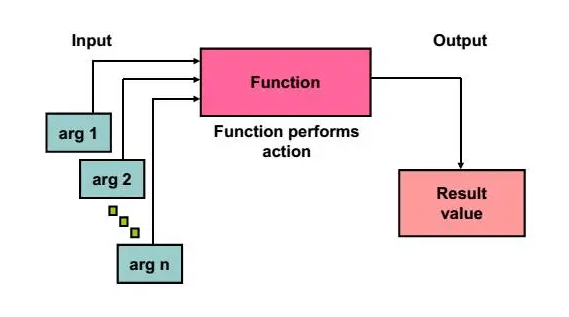
- Introduction to SQL Functions
- Types of SQL Functions
- What are Built-in Functions in SQL?
- Common Built-in SQL Functions
- What are User-Defined Functions (UDFs)?
- Types of User-Defined Functions
- How to Create and Run a Scalar Function
- Conclusion
Introduction to SQL Functions
In Structured Query Language, or SQL, functions play an essential role in transforming data, performing calculations, and simplifying the way queries are written. A SQL function is essentially a predefined operation that accepts input parameters, executes a specific task such as mathematical calculations or data manipulation, and then returns a result. These functions are designed to increase the efficiency of database operations by reducing redundancy and promoting code reusability. By using functions, developers and data analysts can write modular and more readable SQL code, which is easier to maintain and debug. This modularity helps ensure that complex tasks do not need to be rewritten repeatedly, saving both time and effort. Database Training in SQL offers a wide range of built-in functions that cover many common use cases. For example, aggregate functions such as SUM(), which adds up values in a column, and COUNT(), which returns the number of rows, are frequently used in data analysis and reporting. Other functions might include string manipulation, date and time calculations, and conditional logic. Beyond these built-in options, SQL also allows the creation of user-defined functions, often called UDFs. These are custom functions written by users to address specific business needs or complex operations that are not covered by standard SQL functions. Learning how to effectively use both built-in and user-defined functions can dramatically enhance the power and flexibility of your SQL queries. Ultimately, a strong grasp of SQL functions enables professionals to write more concise and efficient code, improving both performance and clarity in database applications and analytical processes.
Interested in Obtaining Your Database Certificate? View The Database Online Training Offered By ACTE Right Now!
Types of SQL Functions
SQL functions can be broadly categorized based on their purpose and usage, helping developers select the appropriate function for different tasks. One major category is built-in functions, which are predefined by the database management system and ready to use without any additional setup. These functions cover a wide range of operations and are optimized for performance in DBMS vs RDBMS vs NoSQL. Another important category is user-defined functions, or UDFs, which are created by users to meet specific requirements that built-in functions may not address. UDFs provide flexibility by allowing custom operations tailored to unique business needs. Functions can also be divided based on the type of output they produce. Scalar functions return a single value for each input, such as the current date or the length of a string.

These are often used to transform or calculate values on a row-by-row basis. Aggregate functions, on the other hand, operate on a set of values and return a single summary result. Examples include SUM, which adds values, and AVG, which calculates an average. These functions are crucial in generating reports and analyzing data sets. Additionally, there are specialized functions designed for specific data types. String functions manipulate textual data, performing operations like converting text to uppercase or lowercase, or concatenating multiple strings together. Date functions focus on working with date and time values, enabling tasks such as retrieving the current date or adding a specific number of days to a date. Mathematical functions provide calculation capabilities, such as rounding numbers or finding the ceiling or floor values. Understanding these categories allows you to choose the right SQL function based on your specific task, making your queries more efficient and easier to read.
What are Built-in Functions in SQL?
- Pre-Written and Stored: Built-in SQL functions come pre-written and are stored within the database engine, ready for immediate use.
- Ease of Use: These functions can be used directly in SQL queries without needing to write any custom logic or code.
- Wide Range of Operations: They support various tasks like string formatting, mathematical calculations, date and time handling, and data analysis.
- Example Usage: For instance, to count the total number of orders in a table, you can simply write: SELECT COUNT(*) FROM Orders; in Cassandra Vs MongoDB.
- Increase Query Power: Built-in functions enhance SQL’s capabilities, enabling more complex and useful data manipulations effortlessly.
- Boost Productivity: By reducing manual coding, these functions help developers write cleaner and more efficient queries faster.
- Maintainable and Cleaner Code: Using built-in functions promotes better query readability and maintainability, making database operations easier to manage.
- String Functions: These functions manipulate text data. Examples include UPPER() to convert strings to uppercase, LOWER() to convert to lowercase, LEN() to find string length, and SUBSTRING() to extract parts of a string.
- Mathematical Functions: Used for numerical calculations in Database Training, functions like ROUND() help round numbers to a specified decimal place, CEIL() rounds numbers up, FLOOR() rounds down, and ABS() returns the absolute value of a number.
- Date and Time Functions: These functions deal with dates and times. For instance, GETDATE() fetches the current date and time, DATEPART() extracts specific parts such as year or month, and DATEDIFF() calculates the difference between two dates.
- Aggregate Functions: Aggregate functions perform calculations on a set of values to return a single result. Common ones include SUM() to get totals, AVG() for averages, MAX() to find the maximum value, and MIN() for the minimum.
- Data Transformation: Built-in functions help transform data during query execution, reducing the need for extra processing in application code.
- Efficiency and Productivity: Using these functions improves query performance by offloading work to the database engine, and increases developer productivity with ready-made tools.
- Consistency: They ensure that data manipulation and analysis follow standardized, reliable methods across different queries and projects.
- Scalar Functions: Scalar functions return a single value based on the input parameters. They are commonly used in SELECT, WHERE, and other clauses to perform calculations or manipulate data at the row level.
- Inline Table-Valued Functions (ITVF): These functions return a table result generated by a single SELECT statement. They are efficient and suitable for simpler queries where the result can be directly fetched without additional procedural logic.
- Multi-statement Table-Valued Functions (MTVF): MTVFs return a table as well but allow for multiple SQL statements inside the function body. This is useful when complex logic, such as multiple joins or conditional processing, is required.
- Use Case Suitability: Scalar functions are best when you need a single computed value, while ITVFs and MTVFs are ideal when returning sets of rows in MongoDB Commands Cheat Sheet.
- Performance Considerations: ITVFs generally perform better than MTVFs because of their simpler execution plans and direct output from a single query.
- Modularity and Reusability: All these functions promote reusable code, reducing duplication and improving maintainability.
- Choosing the Right Type: Selecting the appropriate function type depends on the complexity of the logic you want to implement and the performance characteristics needed for your application.
To Earn Your Database Certification, Gain Insights From Leading Blockchain Experts And Advance Your Career With ACTE’s Database Online Training Today!
Common Built-in SQL Functions

What are User-Defined Functions (UDFs)?
User-Defined Functions, commonly known as UDFs, are custom functions created by developers to perform specific operations that built-in SQL functions may not be able to handle. These functions allow users to encapsulate complex or repetitive logic into a single reusable unit, which helps keep SQL scripts cleaner and more manageable. By using UDFs, developers can avoid rewriting the same code multiple times across different queries, reducing redundancy and minimizing the risk of errors. This reusability makes UDFs especially valuable in modular and enterprise-level database applications, where complex business logic needs to be applied consistently throughout the system in Types Of SQL Indexes. Creating a UDF involves defining several key components. First, a unique name must be assigned to the function so it can be easily identified and called within SQL statements. Next, the function requires parameters, which are inputs passed to the function to customize its operation based on the values provided during execution. Additionally, a return type must be specified, indicating the type of result the function will produce, such as a number, string, or date. The core of the UDF is its body, which contains the SQL logic that performs the desired computation or data manipulation. Once created, UDFs are stored directly in the database and can be used repeatedly just like any built-in function. This feature enables developers and database administrators to create more modular, efficient, and maintainable code. Overall, mastering UDFs empowers SQL users to extend the functionality of their database systems, making it easier to implement custom behaviors and complex calculations tailored to specific business needs.
Are You Interested in Learning More About Database? Sign Up For Our Database Online Training Today!
Types of User-Defined Functions
How to Create and Run a Scalar Function
A scalar function in SQL is designed to return a single value for each input, making it particularly useful for performing calculations, string manipulations, or other operations that result in a single output. Scalar functions allow developers to encapsulate repetitive logic that can be reused across multiple queries, improving both efficiency and maintainability of the code. Creating a scalar function involves defining the function name, specifying input parameters, indicating the return data type, and writing the function body that contains the SQL logic. For example, consider a scalar function that concatenates a first name and last name to return a full name in What is MongoDB Port. The function can be created with inputs for the first name and last name, each defined as a variable of type VARCHAR. The function returns a single VARCHAR value that combines these two inputs with a space in between. Once created, this function can be called in SQL queries to generate full names dynamically. In practice, it might look like calling dbo.fn_GetFullName(‘John’, ‘Doe’), which would return the string “John Doe”. This function can be incorporated into SELECT statements to simplify query writing, or even used in JOIN conditions where matching full names is required. Using scalar functions in this way helps streamline frequently used operations by centralizing logic within the database. This approach not only reduces redundancy but also makes code easier to read and maintain. By abstracting common operations into reusable functions, developers can write more modular and efficient SQL queries, which is particularly beneficial in complex or large-scale database applications.
Go Through These Database Interview Questions and Answers to Excel in Your Upcoming Interview.
Conclusion
Running functions in SQL, whether they are built-in or user-defined, significantly enhances your ability to create powerful, efficient, and reusable database queries. Built-in functions provide ready-to-use tools that allow you to manipulate strings, perform mathematical calculations, and work with dates effortlessly. These functions save time by offering standardized ways to handle common tasks, making data processing faster and more consistent across applications. On the other hand, User-Defined Functions, or UDFs, give you the flexibility to add custom logic tailored to your specific needs. By modularizing complex operations into UDFs, you keep your SQL scripts cleaner, more readable, and easier to maintain. This modularity is particularly important in larger database systems or enterprise environments, where consistency and reusability are key in Database Training. Whether your role involves analyzing data, transforming inputs, or designing backend logic for applications, SQL functions are indispensable tools that help you work more effectively. They allow you to encapsulate logic, reduce redundancy, and streamline query development. Mastering SQL functions not only improves the quality of your code but also prepares you for advanced roles in database management, data engineering, business intelligence, and backend development. Understanding both scalar functions, which return a single value, and table-valued functions, which return a set of rows, expands your capabilities in handling complex data manipulation and querying scenarios. In today’s data-driven world, being proficient with SQL functions contributes directly to your career growth by making you a more versatile and efficient developer or analyst. Learning to use these tools effectively will enable you to build robust, scalable, and maintainable database solutions that meet evolving business needs and technological challenges.


